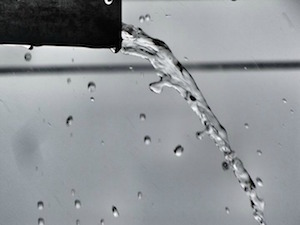 Whether it’s a large institutional cafeteria that runs 24/7, or a small neighborhood pizza restaurant, installing a grease trap of proper size is essential.
Whether it’s a large institutional cafeteria that runs 24/7, or a small neighborhood pizza restaurant, installing a grease trap of proper size is essential.
You risk overflows and messy back-ups in the kitchen if you install a unit that’s too small. You would also risk flushing money down the drain if you install a unit that’s too large.
Determining the appropriate size of a grease trap can be challenging. Luckily, there are resources to help you do so successfully. The following is a guide that informs you on how to size a grease trap for your commercial restaurant.
·Grease Trap Sizing
A grease trap is designed to prevent greasy substances from entering wastewater treatment facilities, septic tanks, and plumbing systems. Greasy substances may also be a hazard to the environment.
The combination of kitchen appliances attached to the grease trap determines required size. To find the right sizing, you need to limit the number of fixtures connected to the grease trap, such as sinks.
Fixtures connected to the trap may include a mop sink, a pot sink, a 3-compartment sink, and a dishwasher.
You can also have more than one grease trap installed depending on the location of the appliances in the kitchen.
·Factors that Determine Grease Interceptor Sizing
Formulas used in grease trap and passive grease interceptor sizing can vary from city to city. Grease interceptors, grease traps, and grease recovery devices are sized using different strategies and formulas.
Grease traps are sized according to the rate of incoming flow, in gallons per minute gpm. Associated with this incoming flow rate is the capacity of the trap. Charts, formulas, and calculations are used to find grease trap sizing and capacity.
It is recommended that you always check with your plumber and local grease trap company for specific regulations. Meanwhile, you can use a grease trap calculator to get a detailed sizing for your grease trap and grease recovery device.
·Local Plumbing Codes
 For public health and safety, you’re obliged to meet the required standards of the approved codes. The codes determine design and installation criteria, and they typically follow those set forth by the Plumbing & Drainage Institute.
For public health and safety, you’re obliged to meet the required standards of the approved codes. The codes determine design and installation criteria, and they typically follow those set forth by the Plumbing & Drainage Institute.
Municipal codes frequently disallow automatic dishwashers from being attached to grease traps. In this scenario, the wastewater is left to flow directly into the sanitary sewer. Although, some Municipal codes make it mandatory that all drains be attached to the grease trap.
While sometimes possible, outside in-ground grease interceptors are space-limited. In fact, the concept of only permitting a large in-ground grease trap to meet regulations is outdated and no longer relevant.
Local plumbing codes usually find the design and installation criteria. The guidelines set forth by the Plumbing & Drainage Institute are also typically followed.
Sometimes, the local codes may require an engineer/plumber or a company specialized in grease traps to help you set up your trap by one or two options.
The two options are:
1. Fixture capacity (ex. capacity of your sink)
2. Gravity flow rates
The two options are guided by the Uniform Plumbing Code (UPC) developed by the International Association of Plumbing and Mechanical Officials.
1. Grease Trap Sizing Using Fixture Capacity
You can use this method if the fixture dimension in your FSE (food service establishment) is known. Otherwise, use the gravity flow rate option instead. There’s a correlation between the maximum flow rate to the grease trap and the volume of the fixtures.
Usually, grease traps are rated according to the flow rate. This means that you can determine its size by calculating the total volume of the fixtures (ex. of the sinks) feeding the grease trap.
Calculating the Flow Rate
Step 1: Calculate the capacity of the fixture (ex: capacity of the sink) your grease trap is servicing by measuring the length, width, and depth. Use inches for the capacity of the sink. Next, multiply all three values. The resulting value is the volume of the fixture. Let’s assign this value to A.
Step 2: Convert A to gallons. 1 gallon is equal to 231 cubic inches. The resulting figure is now in gallons. Let’s assign this figure as B.
Step 3: Determine the fill factor (also known as loading factor), which we’ll use to multiply with B. Fill factor refers to your sink’s fill capacity. If you usually fill your sinks to ¾ of its full capacity, then your fill factor is 0.75. Once you have the fill factor, multiply it by B gallons. The resulting figure is now C gallons.
Step 4: Determine how long it takes to completely drain the sinks/fixtures (the minute drainage period). Normally, the drainage period is 1 or 2 minutes. A one minute drainage period is optimal. To figure out the drainage period, simply divide C with either 1 or 2 minutes. The resulting figure is D gallons per minute gpm.
Now you’ve got your flow rate.
2. Grease Trap Sizing Using Gravity Flow Rates
 Under this method, the sizing is according to the grease waste pipe’s diameter. According to the Uniform Plumbing Code, the maximum flow rate for a waste diameter pipe is 20 gallons per minute (GMP).
Under this method, the sizing is according to the grease waste pipe’s diameter. According to the Uniform Plumbing Code, the maximum flow rate for a waste diameter pipe is 20 gallons per minute (GMP).
If you choose a two-minute drainage period, you would need a 10 gallons per minute gpm – rated grease trap. Basically, for this specific case, you must make sure that the volume of the sink feeding into the grease trap –rated 10 gallons per minute gpm doesn’t exceed 25 gallons.
Conclusion
Determining the right size of a grease trap is key. However, the determination isn’t always easy, especially given how complicated and messy the world of grease trap selection is.
Hopefully, this guide has been successful in teaching you how to size a grease trap for your restaurant or institution's sinks.
If you need any help don't hesitate to reach out to us!